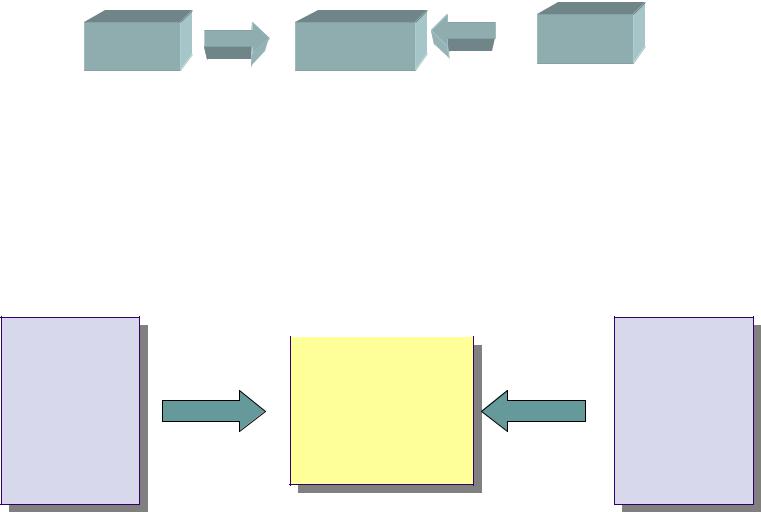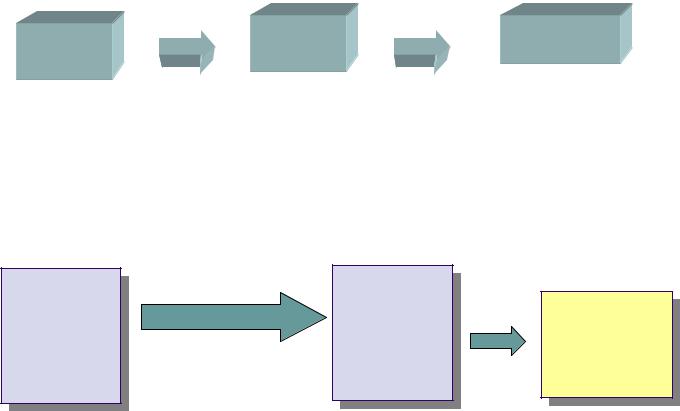
Gruber
.pdfDeveloping Codes 3
Conditions or constraints |
Lose of job (before |
|
financial difficulties), |
|
moving away (before |
|
lost contact with old |
|
friends) |
Consequences
Settings – the entire context of the events under st udy
Reflexive – researcher’s role in the process, how intervention generated the data
Table: Types of phenomena that can be coded (Adapted from Bogdan and Biklen, 1992; Strauss, 1987; Mason, 1996; and Gibbs, 2006), in: Taylor, C and Gibbs, G R (2010) "How and what to code", Online QDA Web Site, www.onlineqda.hud.ac.uk/Intro_QDA/how_what_to_code.php, 20.02.2012
Confidence gets dates, positive attitude attracts opportunities
University, work place, housing estate
Probing question “How did you feel when he said that?”
11
Mixed Methods
Research

Abbas Tashakkori & |
Abbas Tashakkori & |
John Creswell |
Sharlene Nagi |
|
Charles Teddlie (2010) |
(2008) |
Hesse-Biber |
||
Charles Teddlie (2002) |
||||
|
|
(2010) |
||
|
|
|
Udo Kuckartz & John |
John Creswell & |
Charles Teddlie & Abbas |
John Creswell |
|
|
Creswell (2012) |
Vicky Clark (2006) |
(2006) |
|
||
Tashakkori (2009) |
13 |
||||
|
|
|
How, when, and why did mixed methods begin?
•How?
–Evolved over last twenty years
–Quantitative research to qualitative to mixed metho ds
•When?
–Beginnings in 1988-1989
•Jennifer Greene – USAUniversity of Illinois - evaluato r
•John Hunter and Allen Brewer – USA -Northwestern and Boston College - sociologists
•Alan Bryman - England – management
• John Creswell – USA – education – my chapter on combini ng, my teaching of proposal development class – lst generation
•Fielding – sociologist in UK
•Why?
–Legitimacy of qualitative research
–Increased interest in having two strands – quan and qua l – in studies
–Individuals looking for new methodologies
core characteristics of mixed methods research
•collection of both qualitative and quantitative data (openand closed-ended) in response to research questions
•analysis of both qualitative and quantitative data
•integration of these two data sources)
•reducing data loss (which occurs due to hanging on ly on one method)
•gathering necessary information by conducting interviews and by using questionnaires to clarify one’s own picture about the topic
•linking data won by oral conversations with respon dents with data . Gathered in questionnaires (simply Yes/No-questions;
weighting on a scale, ranging from 0 to 6)
15
Rationales for using mixed methods research
Triangulation
- “Triangulation is not simply combining different t ypes of data, but it attempts to relate the two types of information so as to leave the validity of each type of information intact (…) Nei ther qualitative nor quantitative methods alone could get yield the results of the combination of the two.” (Perone 2003:2)
Simultaneous triangulation:
•Use of both qualitative and quantitative methods a t the same time
•e.g., Survey methods and Case study
–Sequential triangulation:
•Results of one method are essential for planning t he next method
•e.g., Exploratory Pilot study precedes Experimenta l design
Types of Triangulation
•method triangulation more than one method for gathering data is used, because each addresses a different dimension of topics of investigation
•data triangulation gathering data through a set of sampling strategies
•investigator triangulation more than one researcher in the field to gather and interpret data
•theoretical triangulation more than one theoretical position in interpreting data is used
(Denzin 1970; Bryman 2001)
Typology of Mixed Methods Research
1)Are the quantitative and qualitative data collected simultaneously or sequentially?
2)What has priority – the quantitative or the qualit ative data? (Morgan 1998; Morse 1991)
3)What is the function of the integration – e.g. tri angulation, explanation, or exploration? (Creswell 2003; Creswell et al. 2003; Greene et al. 1989)
4)At what stage(s) in the research process does multi-strategy research occur (e.g. stages of research question formulation, data collection, data analysis, or data interpretation)? (Tashakkori & Teddlie 1998)
5)Is there more than one data strand (with a multi-strand study, there is more than one research method and hence source of data; while with a mono-strand study, there is one research method and hence one source of data)? (Tashakkori & Teddlie 2003)
Bryman (2006:98)

Types of Mixed Methods Designs (1)
1. Surveys and focus groups data are merged and compared
QUAL |
RESULTS |
QUAN |
|
Convergent Parallel Design
•QUAN and QUAL strands are conducted separately yet concurrently and merged at the point of interpretation
•equal priority given to each strand
•used to form a more complete understanding of a to pic, or to validate or corroborate quantitative scales
QUAN |
|
QUAL |
|
||
QUAN |
|
QUAL |
Data & |
|
Data & |
Data & |
|
Data & |
Results |
Intepretation |
Results |
Results |
Results |
|
|
Intepretation |
|
19

Types of Mixed Methods Designs (2)
2. Survey is first completed and then focus groups used as a follow-up to explain the quantitative results
QUAN 
 QUAL
QUAL 
 RESULTS
RESULTS
Explanatory Design
QUAN
QUAN
Data &
Data &
Results
Results Following up
qual qual
Data & Data &
Results Results
Interpretation
Interpretation
